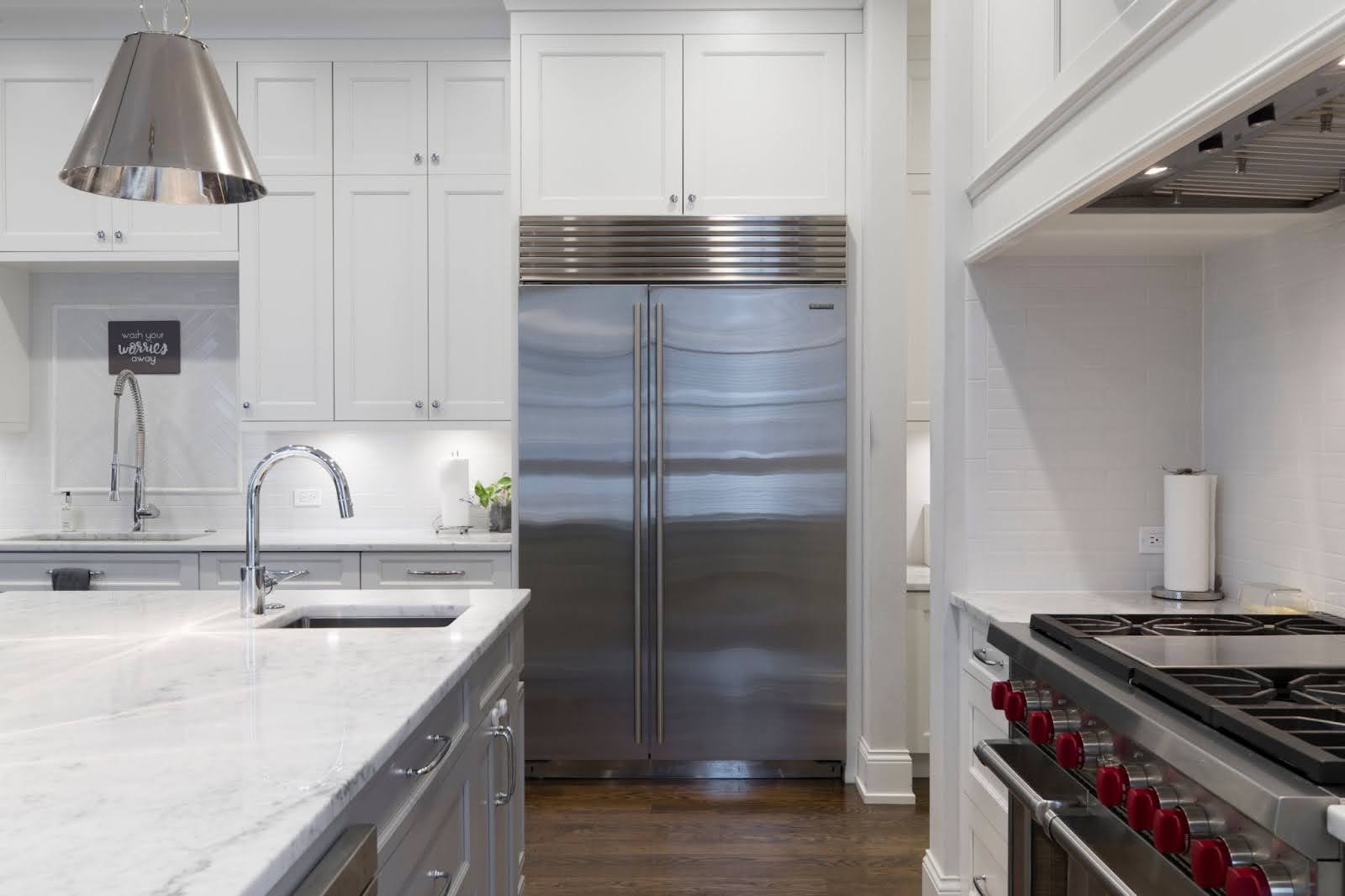
In the heart of every home, the refrigerator stands as a silent sentinel, safeguarding our perishables and keeping our food fresh. A functional refrigerator is not just a convenience; it’s a necessity for modern living. From preserving leftovers to maintaining the quality of fresh produce, a reliable fridge plays a pivotal role in our daily lives.
However, even the most dependable appliances can encounter hiccups along the way. Understanding and addressing these issues is crucial to ensure the longevity and efficiency of your refrigerator. This guide will walk you through some common refrigerator problems and empower you with practical solutions to keep your fridge in top-notch condition. Call for professional help from a Refrigerator repair service if the issue is serious.
Common Refrigerator Problems
Temperature Issues
Fridge Not Cooling
One of the most distressing problems is when your refrigerator fails to maintain a cool temperature. If you notice your milk could be more chilly than it should be or your veggies seem to wilt faster than usual, it’s time to investigate.
Solution: Start by checking the thermostat settings. Ensure it’s set to the recommended temperature. If the issue persists, clean the condenser coils to improve heat exchange. A dirty coil can hamper the cooling process.
Freezer Too Warm
A freezer that feels more like a cool room is a clear sign of trouble. It can lead to thawing of frozen goods, potentially causing food spoilage.
Solution: Inspect the freezer’s vents for any obstructions. Sometimes, rearranging items can improve airflow. Additionally, make sure the freezer door is sealed tightly; a loose seal allows warm air to enter, affecting the overall temperature.
Inconsistent Temperatures
Fluctuating temperatures in different sections of the refrigerator can compromise the freshness of your food.
Solution: Check for any blockages in the air vents and adjust the temperature settings accordingly. If the problem persists, the thermostat or temperature sensor may be faulty and may require professional attention.
By understanding these temperature-related issues, you can take proactive measures to keep your refrigerator working optimally. In the following sections, we will delve into other common problems and their practical solutions to ensure your fridge continues to serve you efficiently.
Common Refrigerator Problems
Leaking Water
Water Pooling Inside the Fridge
The sight of water pooling beneath your vegetables can be alarming. Not only is it inconvenient, but it can also lead to mold growth and compromise the freshness of your food.
Solution: Begin by checking the defrost drain for clogs. A clogged drain can cause water to accumulate. If the drain is clear, inspect the refrigerator’s water line and ensure it’s securely connected. A loose or damaged water line could be the culprit.
Water Under the Refrigerator
A puddle beneath your refrigerator can have various causes, and it’s essential to identify and address the issue promptly.
Solution: Examine the water supply line to the refrigerator for leaks. Tighten any loose connections and replace damaged lines. Additionally, check the drip pan beneath the fridge for cracks or misalignment. If the pan is damaged, it may need to be replaced.
Strange Noises
Clicking Sounds
Unusual clicking sounds emanating from your refrigerator can be disconcerting. These noises often indicate a malfunction that requires attention.
Solution: Investigate the source of the clicking. It could be a faulty compressor relay or a problem with the condenser fan. If you’re uncomfortable troubleshooting electrical components, it’s advisable to seek professional assistance.
Banging or Rattling Noises
Persistent banging or rattling noises disrupt the tranquility of your kitchen and suggest a mechanical issue within the refrigerator.
Solution: Check for loose components, such as the condenser fan or any items stored on top of the fridge. Secure loose items and tighten any accessible screws. If the noise persists, it may be a sign of a malfunctioning compressor, necessitating professional intervention.
Constant Humming
While a gentle hum is usual, a constant and loud humming can indicate an underlying issue.
Solution: Inspect the condenser fan to ensure it’s clean and functioning correctly. Excessive dirt or a malfunctioning fan may contribute to the noise. If the humming persists, it could be a sign of a failing compressor, requiring professional assessment.
By addressing water leaks and strange noises promptly, you not only prevent potential damage to your refrigerator but also ensure a quieter and more efficient kitchen environment. In the next section, we will explore additional common refrigerator problems and their practical solutions.
Ice and Frost Buildup
Excessive Frost in the Freezer
Discovering a winter wonderland inside your freezer when it’s not the holiday season is a clear indication of a problem.
Solution: Begin by checking the freezer door seal for any gaps or tears. A compromised seal allows warm air to enter, leading to excessive frost. If the seal is intact, the defrost timer or defrost heater may be malfunctioning. Consult your refrigerator’s manual for guidance on accessing and testing these components.
Ice Buildup in the Ice Dispenser
An ice dispenser clogged with frost can impede the flow of ice cubes and create a mess.
Solution: Inspect the ice dispenser chute for any obstructions. Clear away any ice buildup and ensure that the dispenser door is closing correctly. If the issue persists, the dispenser motor or door solenoid may require inspection by a professional.

Door Seal Problems
Difficulty Closing the Door
A refrigerator door that refuses to close correctly can compromise its efficiency and lead to temperature fluctuations.
Solution: Examine the door gasket for any damage or debris. Clean the gasket and the surface it seals against, and ensure no items are obstructing the door’s closure. If the problem persists, the hinges or the door itself may need adjustment.
Leaking Cold Air
Feeling a chilly draft in your kitchen? A leaking door seal could be the culprit.
Solution: Inspect the entire perimeter of the door seal for any visible gaps or damage. If you identify any issues, consider replacing the seal. Additionally, check for any misalignment of the door, as this can impact the effectiveness of the seal.
By tackling ice and frost buildup, along with addressing door seal problems, you not only maintain the efficiency of your refrigerator but also ensure that your food stays fresher for longer. In the following section, we will delve into more common refrigerator problems and their practical solutions.
Ice Maker Malfunctions
No Ice Production
A silent ice maker can put a damper on your plans for chilled beverages. When your ice maker refuses to produce ice, it’s time to troubleshoot.
Solution: Begin by checking the water supply to the ice maker. A clogged water line or a faulty water inlet valve may be the cause. Ensure the freezer is cold enough and the ice maker switch is turned on. If issues persist, consider consulting your refrigerator’s manual for specific troubleshooting steps or seek professional assistance.
Odd-Tasting Ice
Discovering that your ice cubes have an unusual flavor can be perplexing. Various factors can influence the taste of your ice.
Solution: Check the water filter, as a dirty or expired filter can affect the taste of the ice. If your refrigerator doesn’t have a water filter, clean the ice maker and the ice bin. Consider using ice trays as a temporary solution while troubleshooting the issue.
Condensation Issues
Sweating on the Exterior
If you notice your refrigerator exterior resembling a glass of cold water on a hot day, condensation can be a concern.
Solution: Check the humidity controls to see if your refrigerator is equipped with them. Adjusting the humidity settings can help minimize external condensation. Additionally, ensure the door seals are intact and that the door is closed securely.
Moisture Inside the Fridge
Finding moisture inside your fridge can lead to soggy produce and potential food spoilage.
Solution: Check for any cracks or gaps in the interior lining of the fridge. Ensure that containers are properly covered to prevent moisture release. If the issue persists, it could be related to a faulty door seal or a malfunctioning defrost system.
By addressing ice maker malfunctions and condensation issues, you contribute to the overall health and longevity of your refrigerator.
Troubleshooting and Repair Tips
Safety Precautions Before Starting
Before delving into refrigerator troubleshooting, it’s crucial to prioritize safety. Always unplug the appliance before attempting any repairs. Additionally, use caution with any sharp tools and follow manufacturer guidelines throughout the process.
Tools Needed for Basic Repairs
Equip yourself with essential tools such as a screwdriver, pliers, and a vacuum cleaner. Depending on the issue, you may also need a multimeter for electrical testing and a condenser coil brush for cleaning.
Step-by-Step Guide for Common Issues
Checking and Adjusting the Thermostat:
- Ensure the thermostat is set to the recommended temperature.
- If the fridge is still not cooling, consider recalibrating the thermostat or replacing it if necessary.
Inspecting and Cleaning the Condenser Coils:
- Locate the condenser coils at the back or beneath the fridge.
- Gently vacuum or brush away accumulated dirt and debris.
- Clean coils facilitate better heat exchange and improve cooling efficiency.
Examining the Door Seals for Gaps or Damage:
- Inspect the door gaskets for any visible gaps or tears.
- Clean the seals with a mild detergent and warm water.
- Replace damaged gaskets promptly to maintain a tight seal.
Unclogging the Defrost Drain:
- Locate the defrost drain and check for any clogs.
- Use a mixture of warm water and mild detergent to flush out debris.
- Ensure proper drainage to prevent water buildup.
Troubleshooting the Ice Maker:
- Inspect the water supply line for any blockages.
- Check the water inlet valve for functionality.
- Consult the manual for ice maker-specific troubleshooting steps.
Evaluating the Compressor and Fan:
- Listen for unusual noises and vibrations from the compressor.
- Inspect the fan for any visible damage or obstructions.
- If issues persist, consult a professional for further diagnosis.

When to Call a Professional
Signs that the Problem Requires Professional Attention
Recognizing when to call in the experts is crucial. Consider professional help if:
- Electrical components need testing or replacement.
- Issues persist despite basic troubleshooting.
- Refrigerant-related problems arise, requiring specialized knowledge.
Importance of Timely Repairs to Prevent Further Damage
Timely intervention can prevent minor issues from escalating into major problems. Addressing refrigerator problems promptly not only ensures the longevity of your appliance but also safeguards the freshness of your food.
Preventive Maintenance Tips
Cleaning and Maintaining the Refrigerator
- Regularly clean the interior and exterior surfaces.
- Wipe down spills promptly to prevent odors and mold.
- Keep the condenser coils clean for optimal heat exchange.
Consider hand-cleaning certain intricate parts of your refrigerator. Like Craftsmen who make products with hands and are known for their meticulous attention to detail, approach each task with care. Similarly, delicately cleaning hard-to-reach areas ensures that your appliance receives the attention it deserves.
Regular Inspection of Components
- Periodically check door seals for integrity.
- Inspect water lines and filters for leaks or clogs.
- Examine the ice maker and dispenser for any visible issues.
Temperature and Door Seal Checks
- Use a thermometer to verify the accuracy of the refrigerator and freezer temperatures.
- Test door seals by placing a dollar bill in the closed door; if it slips out quickly, the seal may need replacement.
From temperature issues to ice maker malfunctions, understanding common refrigerator problems empowers you to take proactive steps in maintaining your appliance. Quick action in addressing issues ensures the longevity and efficiency of your refrigerator, preserving both your food and your investment. Regular maintenance is the key to a well-functioning refrigerator. By following preventive measures and conducting routine inspections, you contribute to the smooth operation of your appliance and enjoy the peace of mind that comes with a reliable fridge.




